Flinders Island, located in the Bass Strait off the coast of Tasmania, is a haven for bird enthusiasts. The island boasts a diverse range of avian species, many of which are endemic to the region.
From the majestic wedge-tailed eagle to the colorful rosella and swift parrot, Flinders Island is home to over 230 bird species. Whether you’re a seasoned birdwatcher or simply enjoy observing the natural beauty of wildlife, the island’s birdlife is a remarkable sight to behold.
With its unique array of habitats, from coastal wetlands to rugged mountains and forested areas, Flinders Island provides a rich environment for these feathered creatures to thrive.
In this article, we’ll explore the fascinating birdlife found on Flinders Island, highlighting some of the island’s most impressive species and their distinctive features.
1. Silvereye
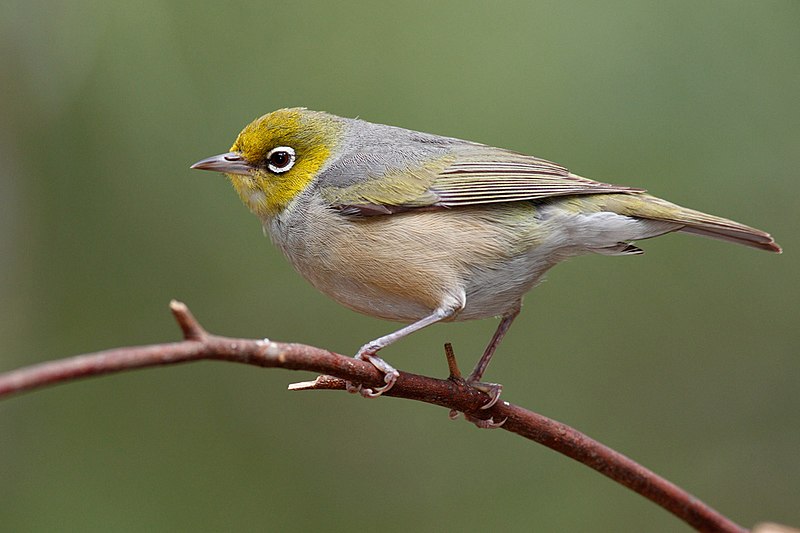
The silvereye, also known as wax-eye, is a tiny passerine bird native to the south-west Pacific region. It was first recorded in New Zealand in 1832 and there were greater numbers by 1856.
These birds are omnivorous feeders that make their home in open woodlands or gardens with lush vegetation.
Their plumage has greyish tones on top of its head and wings giving it a silver sheen look which inspired its common name ‘silvereye’.
The underside of these birds have white feathers allowing for camouflage among foliage when they fly low over shrubs and trees seeking food such as nectar, insects and fruit.
They are social creatures who often flock together to share meals while communicating through their unique chirps.Scientific classification:
| Kingdom | Animalia |
| Phylum | Chordata |
| Class | Aves |
| Order | Passeriformes |
| Family | Zosteropidae |
| Genus | Zosterops |
| Species | Z. lateralis |
Also Featured In: New Zealand Birds, Silver Birds You Should Know
2. Brown Quail
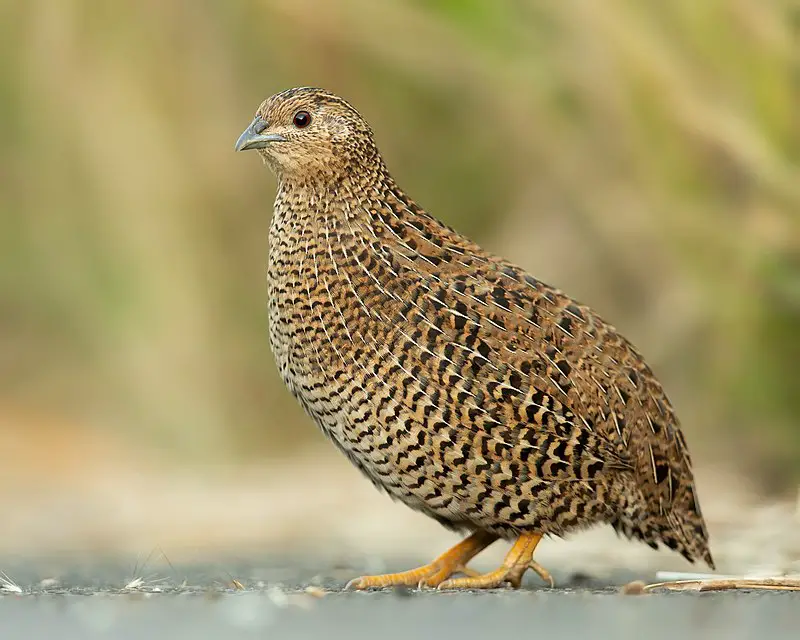
The Brown Quail is a true quail of the Phasianidae family found in Australia, Tasmania, Papua New Guinea and other parts of the Pacific. It’s small size and ground-dwelling habits make it quite common in its range.
The bird has brown feathers on its upper body with black stripes running down either side, while its underside is white or pale yellow.
Its diet consists mainly of grass seeds and insects as well as leaves from various plants.
These birds are usually seen foraging around dawn or dusk when they search actively for food but can also be observed at night using their sharp hearing to detect predators nearby.
Overall this pretty little bird makes an interesting addition to any garden.Scientific classification:
| Kingdom | Animalia |
| Phylum | Chordata |
| Class | Aves |
| Order | Galliformes |
| Family | Phasianidae |
| Genus | Synoicus |
| Species | S. ypsilophorus |
Also Featured In: Timor-Leste birds, Common Townsville Birds
3. Greater Crested Tern
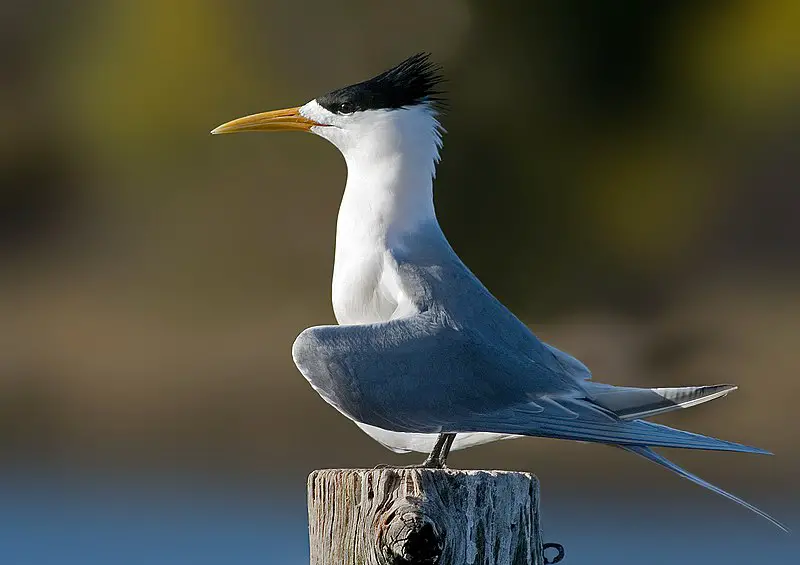
The Greater crested tern is a large bird of the family Laridae, found in tropical and subtropical regions across the Old World.
It has five subspecies which breed from South Africa to Australia, before migrating away for winter.
The distinctive crest feathers on its head give it its name and set it apart from other species like gulls or skuas.
They have wide wingspans that allow them to fly swiftly over oceans or coasts with ease – they are known as swift terns because of this.
The greater crested tern feeds mainly off fish caught at sea by plunge-diving into waters up to 10m deep; an impressive feat indeed.
With their bright white plumage, black caps and long yellow bills they stand out against any landscape – even on land these birds can be seen enjoying life along coastlines.Scientific classification:
| Kingdom | Animalia |
| Phylum | Chordata |
| Class | Aves |
| Order | Charadriiformes |
| Family | Laridae |
| Genus | Thalasseus |
| Species | T. bergii |
Also Featured In: Maldives birds, Birds of Goa
4. Brown Goshawk
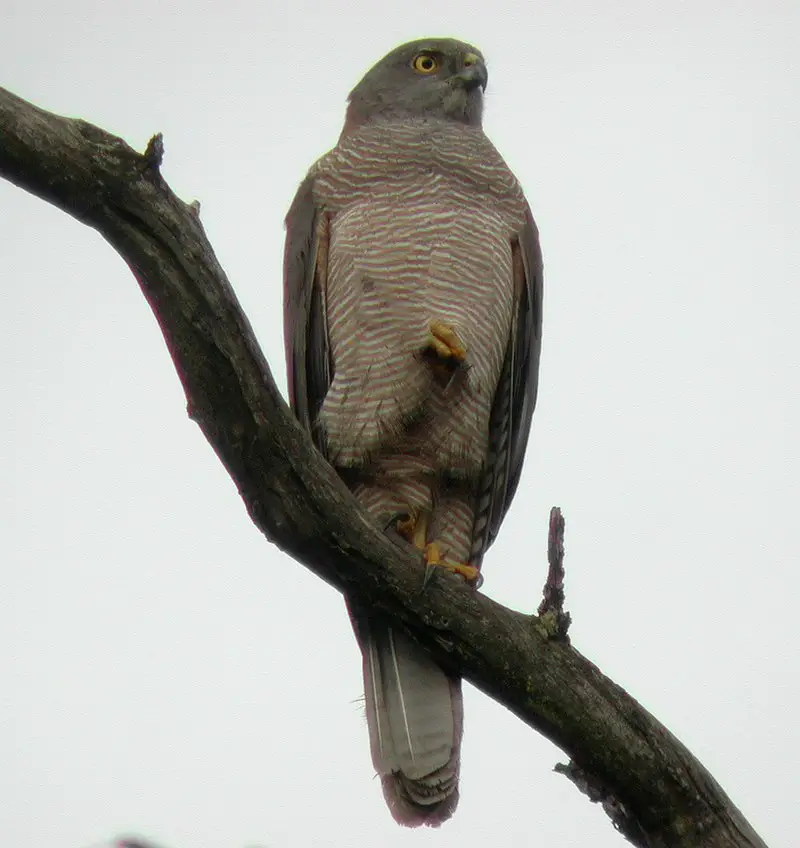
The Brown Goshawk is a medium-sized bird of prey that can be found in Australia and its surrounding islands.
It has grey upperparts with chestnut collar, while the underparts are mainly rufous finely barred with white.
This gives it similar colouring to collared sparrowhawk but it is larger as compared to them; body length being between 40-55 cm.
The flight of this majestic raptor is fast and flexible making for an impressive sight when spotted in the sky.
Its diet consists mostly of small birds, mammals such as rodents or bats, large insects like grasshoppers etc., thus playing an important role in maintaining balance within local ecosystems by controlling population numbers these species.Scientific classification:
| Kingdom | Animalia |
| Phylum | Chordata |
| Class | Aves |
| Order | Accipitriformes |
| Family | Accipitridae |
| Genus | Accipiter |
| Species | A. fasciatus |
Also Featured In: Vanuatu birds, Birds that Charles Darwin Studied
5. Brown Falcon
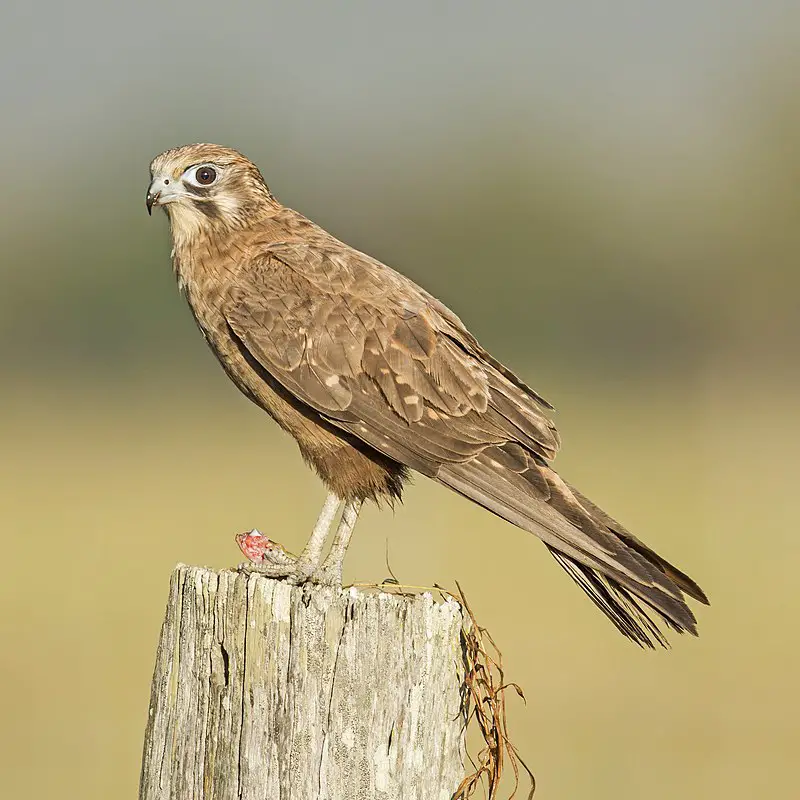
The Brown Falcon is a majestic bird native to Australia and New Guinea. It has a multitude of plumage morphs, with the primary difference being between pale and dark morph birds.
The light-colored ones typically have white undersides with some streaking, while their darker counterparts usually feature entirely brown upper parts.
These large falcons are highly adaptable predators that hunt small animals for food such as rabbits, snakes or lizards.
They also feed on carrion and grains during wintertime when prey becomes scarce. Thanks to its impressive flying abilities, it can quickly soar over vast distances in search of sustenance or mates by relying on powerful thermals ascending from the ground below them.Scientific classification:
| Kingdom | Animalia |
| Phylum | Chordata |
| Class | Aves |
| Order | Falconiformes |
| Family | Falconidae |
| Genus | Falco |
| Species | F. berigora |
Also Featured In: Falcons Species, Birds that Live around Brisbane
6. Green Rosella
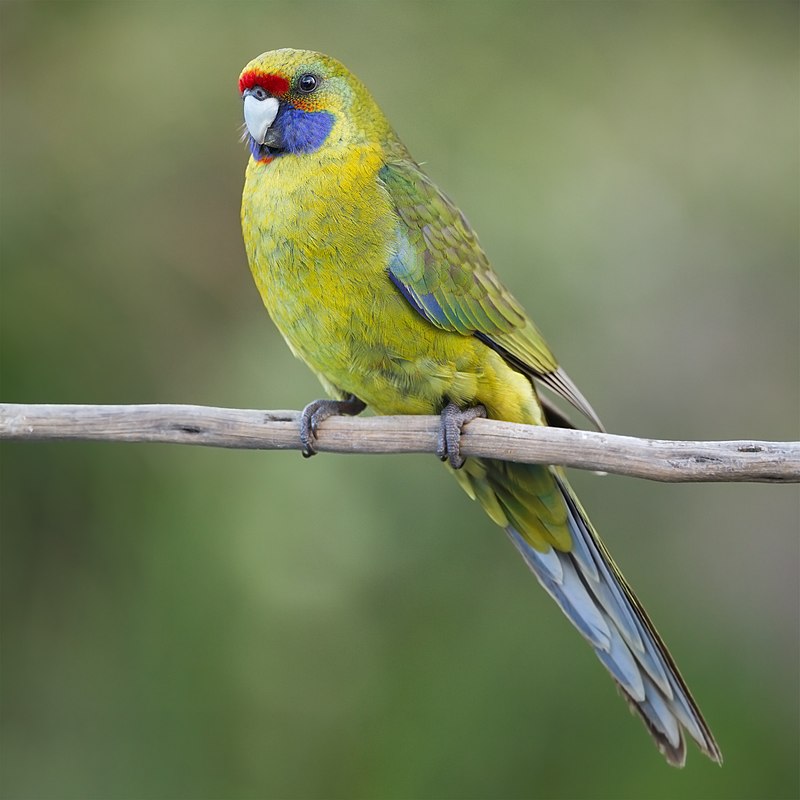
The Green Rosella is a beautiful parrot species that can be found in Tasmania and the Bass Strait islands.
It was first described by German naturalist Johann Friedrich Gmelin in 1788, although it got its name from mistakenly believing it came from New Caledonia.
At 14.5 inches (37 cm) long, this bird is the largest of the rosella genus Platycercus family. Two subspecies are recognised: P.c caledonicus which has bright red underparts and head; and P cecilae with lighter yellowish-orange plumage on its underside.
The upper parts of both male and female birds are green with blue cheeks, black scalloped markings along their wings and tails, while juveniles have brown heads instead of red or orange ones like adults do.
This stunning bird feeds mainly on seeds but also eats fruit, nectar blossoms as well as insects when available.
They typically nest high up in trees where they lay two to three eggs per clutch before incubating them for about 3 weeks until hatching occurs.Scientific classification:
| Kingdom | Animalia |
| Phylum | Chordata |
| Class | Aves |
| Order | Psittaciformes |
| Family | Psittaculidae |
| Genus | Platycercus |
| Species | P. caledonicus |
Also Featured In: Parrots Species, Birds of Tasmania
7. Black-Faced Cormorant
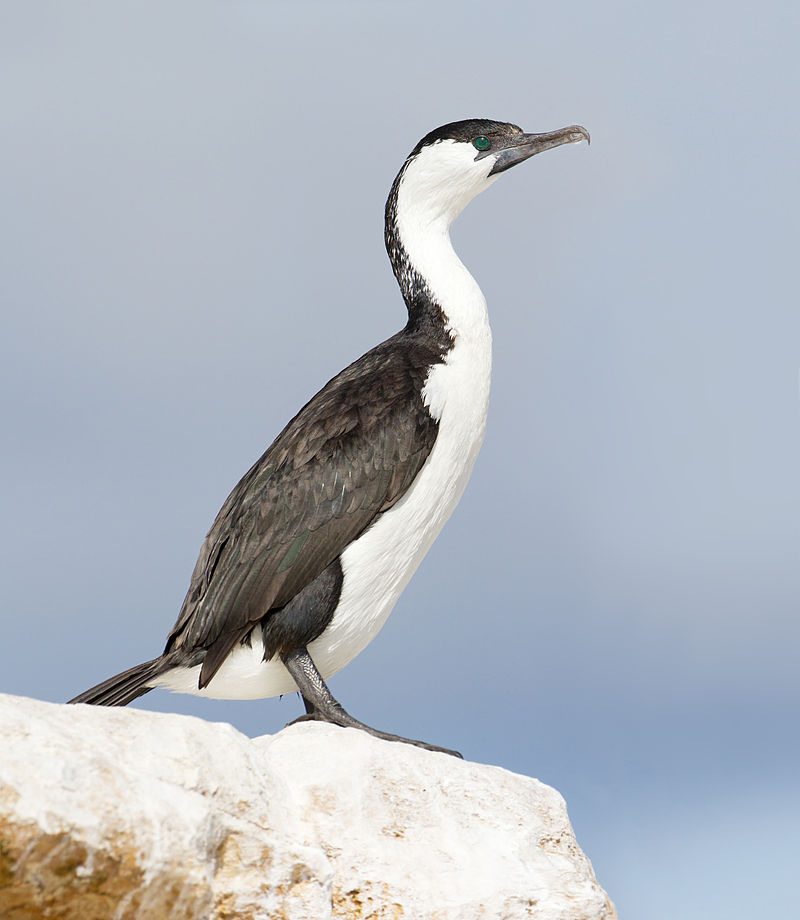
The Black-faced cormorant is a medium sized member of the cormorant family. It has an unmistakable black face, bill and upperparts which contrast wonderfully with its white underparts.
Endemic to coastal regions in southern Australia it can be seen aquatic bird roosting on rocky shores or perched atop trees near water bodies such as lakes, rivers and bays.
Its long hooked bill, webbed feet and powerful wings make it well adapted for diving underwater to hunt fish – their primary source of food.
With strong parental bonds they are often found nesting together in groups along cliffs or tree lined riverbanks helping each other raise their young ones until adulthood when they eventually leave the colony to fend for themselves.Scientific classification:
| Kingdom | Animalia |
| Phylum | Chordata |
| Class | Aves |
| Order | Suliformes |
| Family | Phalacrocoracidae |
| Genus | Phalacrocorax |
| Species | P. fuscescens |
Also Featured In: Cormorant Species, Birds that Live in Kangaroo Island
8. Flame Robin
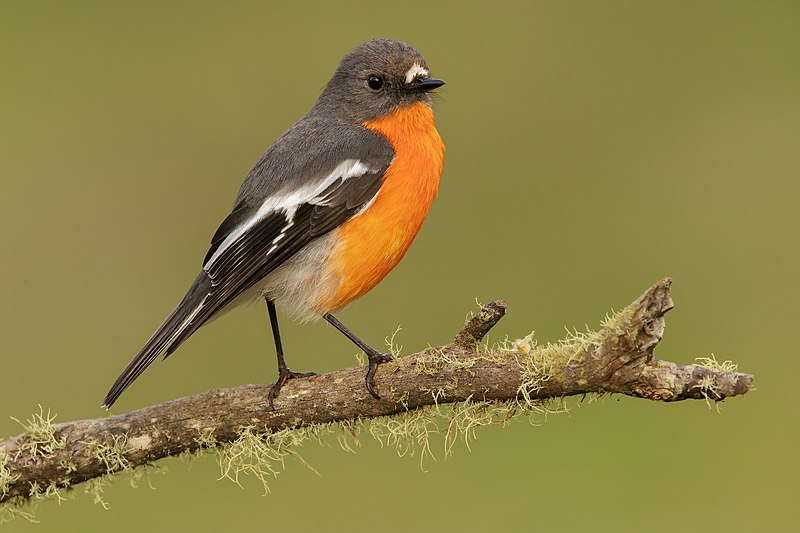
The Flame Robin is a small passerine bird native to Australia. It has bright red feathers on its chest and gets its name from the fiery coloring of these features.
This robin can be found in more excellent areas of south-eastern Australia, including Tasmania. While it’s not an uncommon sight, the Flame Robin isn’t particularly abundant either.
Its diet consists primarily of insects and other invertebrates which it finds while foraging through leaf litter or low vegetation. The species is sexually dimorphic with males having more vibrant plumage than females.
Nevertheless, both genders have striking colors that will catch any birdwatcher’s eye.Scientific classification:
| Kingdom | Animalia |
| Phylum | Chordata |
| Class | Aves |
| Order | Passeriformes |
| Family | Petroicidae |
| Genus | Petroica |
| Species | P. phoenicea |
Also Featured In: birds of orange, Birds of King Island
9. Chestnut Teal
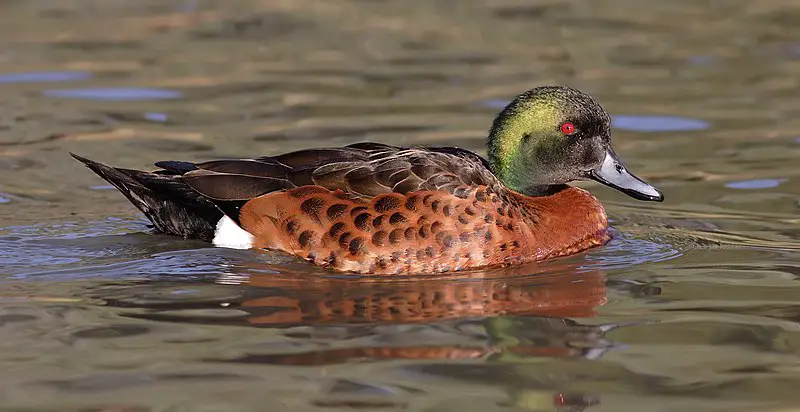
The Chestnut Teal is a dabbling duck found in Australia, protected under the National Parks and Wildlife Act of 1974.
It was first described by naturalist Thomas Campbell Eyton in 1838 with the binomial name Mareca castanea due to its chestnut-brown colouration.
This species typically inhabits wetlands such as lakes, rivers and swamps where they feed on aquatic invertebrates like mollusks and crustaceans.
They have an unmistakable appearance; their heads are greenish blue while their bodies show off hues of iridescent purple or violet that shimmer when exposed to light.
The males also feature white bars across each wing with black barring along the back edge which contrast against its reddish brown tail feathers.
These majestic creatures make for beautiful sight wherever they go.Scientific classification:
| Kingdom | Animalia |
| Phylum | Chordata |
| Class | Aves |
| Order | Anseriformes |
| Family | Anatidae |
| Genus | Anas |
| Species | A. castanea |
Also Featured In: birds of teal, Sydney Birds You Need to See
10. Black-Faced Cuckooshrike
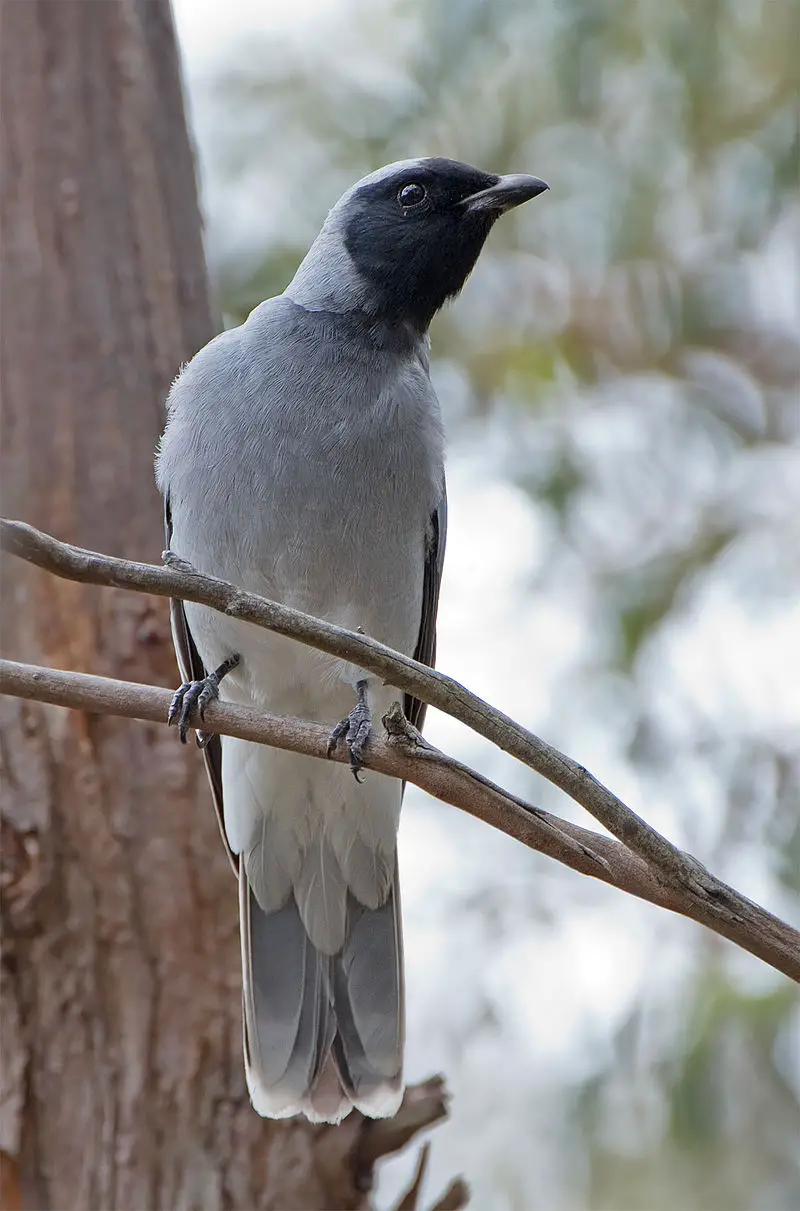
The Black-faced cuckooshrike, found in Australia and southern New Guinea, is a protected species under Australian law.
These birds are omnivorous and commonly seen in wooded habitats, with the exception of rainforests.
Despite this, they are also sometimes found in urban areas. The Black-faced cuckooshrike is a passerine bird and is known for its distinctive black facial markings.Scientific classification:
| Kingdom | Animalia |
| Phylum | Chordata |
| Class | Aves |
| Order | Passeriformes |
| Family | Campephagidae |
| Genus | Coracina |
| Species | C. novaehollandiae |
Also Featured In: Birds that Live around Victoria, Common Melbourne Birds
11. Short-Tailed Shearwater
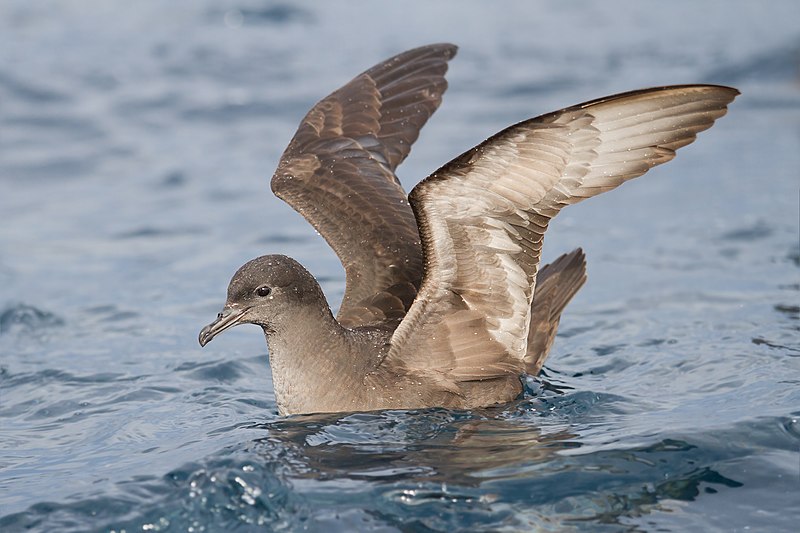
The Short-tailed Shearwater, also known as the Slender-billed Shearwater or Muttonbird, is a migratory seabird species that is native to Australia. It is the most common seabird in Australian waters and is commercially harvested for its chicks.
The bird mainly breeds on small offshore islands and feeds on fish, squid, and zooplankton. Its distinctive call can be heard from far away as it flies low over the ocean.
The Short-tailed Shearwater is an important species for both the ecosystem and the economy, providing food for predators such as foxes and eagles, and supporting a small-scale commercial fishery.
The species faces threats from climate change, pollution, and overfishing, highlighting the need for conservation efforts to protect this important bird.Scientific classification:
| Kingdom | Animalia |
| Phylum | Chordata |
| Class | Aves |
| Order | Procellariiformes |
| Family | Procellariidae |
| Genus | Ardenna |
| Species | A. tenuirostris |
Also Featured In: Birds that Live in the Ocean , Most Common Western Australia Birds
12. Eastern Spinebill
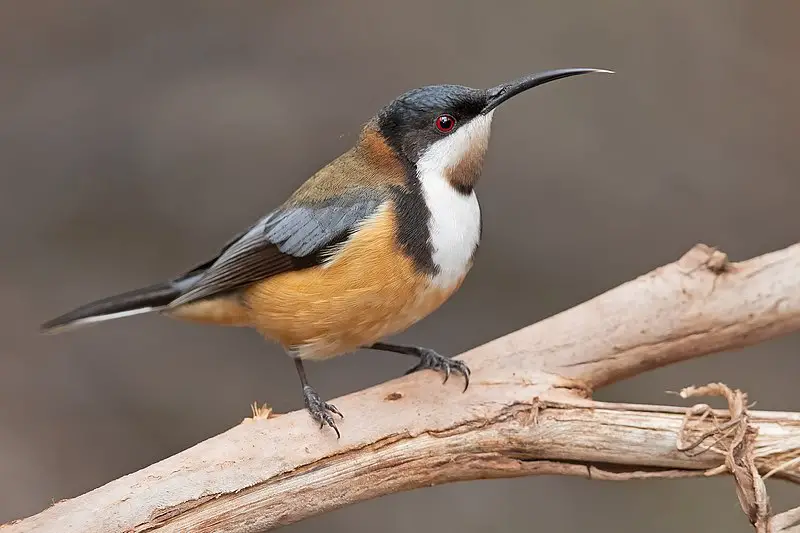
The Eastern spinebill, a honeyeater species, can be found in south-eastern Australia in various habitats, including forest, woodland, and urban gardens in Canberra, Sydney, Melbourne, and Adelaide.
It is distinguishable by its unique black, white, and chestnut feathers, a red eye, and a long bill that curves downwards.
It measures approximately 15 cm in length. The bird was originally identified as Certhia tenuirostris by an English ornithologist.
This bird species is famous for its love of nectar and the way it hovers in front of flowers to feed, leading to cross-pollination.
The Eastern spinebill is popular among birdwatchers due to its eye-catching plumage and its presence in urban areas. The species has an affinity for garden beds that have desirable nectar plants.
This bird is known for its swift and agile flying, which enables it to dart away from predators quickly.Scientific classification:
| Kingdom | Animalia |
| Phylum | Chordata |
| Class | Aves |
| Order | Passeriformes |
| Family | Meliphagidae |
| Genus | Acanthorhynchus |
| Species | A. tenuirostris |
Also Featured In: South Australian Birds, Birds that Live in Gold Coasts
13. Grey Fantail
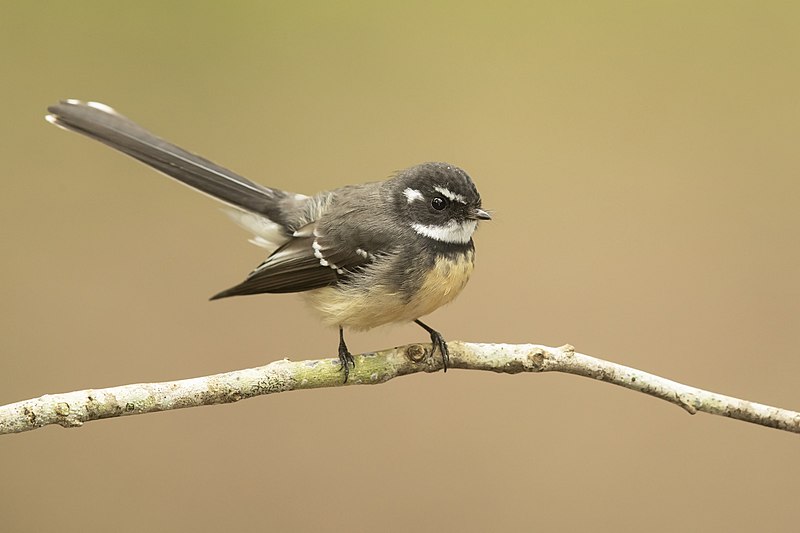
The grey fantail is a tiny bird that primarily eats insects. It has no sexual distinctions, and it may be discovered in Australia, the Solomon Islands, Vanuatu, and New Caledonia.
Although some scientists believe it is the same as the New Zealand fantail for various reasons, including similarities in appearance, others believe it should be classified as a distinct species.
One of the distinguishing features has to do with the bird’s calls. The grey fantail is a prevalent species among bird enthusiasts due to their ability to learn new things and interact with their surroundings.
They are clever birds that enjoy playing and perching on trees. The grey fantail’s habitat comprises woodlands, shrublands, and forests, particularly near bodies of water.
Overall, this species is a delightful addition to any bird lover’s collection.Scientific classification:
| Kingdom | Animalia |
| Phylum | Chordata |
| Class | Aves |
| Order | Passeriformes |
| Family | Rhipiduridae |
| Genus | Rhipidura |
| Species | R. albiscapa |
Also Featured In: Birds that Live in Sunshine Coast, Small Birds that Live in New South Wales
14. Scarlet Robin
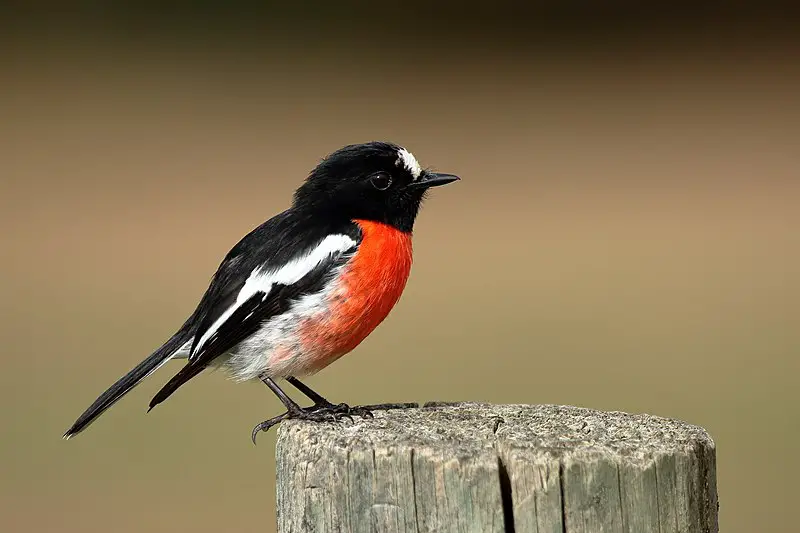
The Scarlet Robin is a red-breasted bird belonging to the Petroica genus. It can be commonly found in Australia and its surrounding islands, such as Tasmania.
Originally identified by Gmelin in Norfolk Island, the species was later split by Schodde and Mason in 1999.
The Scarlet Robin is a passerine bird, meaning it has a unique and specialized mode of feeding.
It is often seen foraging for food on the ground or in lower vegetation. This bird is quite active, and its red plumage makes it easy to spot. Its cheerful tunes also make it a favored bird among birdwatchers.
In addition, the Scarlet Robin has played an essential role in Australia’s indigenous culture, with several myths and stories revolving around it.Scientific classification:
| Kingdom | Animalia |
| Phylum | Chordata |
| Class | Aves |
| Order | Passeriformes |
| Family | Petroicidae |
| Genus | Petroica |
| Species | P. boodang |
Also Featured In: New South Wales Birds You Need to See,
15. Musk Duck
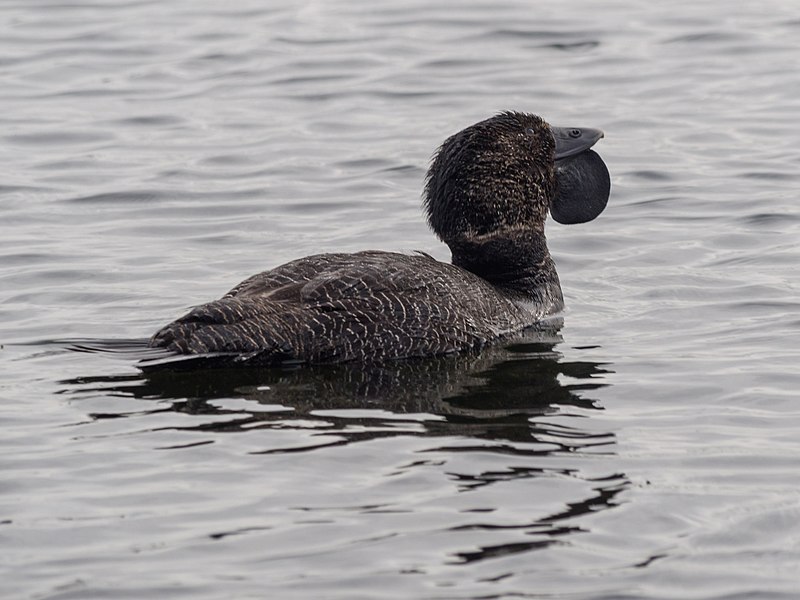
The musk duck is a unique water bird found in southern Australia. It is the only surviving member of the Biziura genus. An extinct relative was once present in New Zealand.
The New Zealand musk duck was larger than the surviving species, with a particularly large head. The musk duck is highly aquatic and has a distinctive stiff tail.Scientific classification:
| Kingdom | Animalia |
| Phylum | Chordata |
| Class | Aves |
| Order | Anseriformes |
| Family | Anatidae |
| Genus | Biziura |
| Species | B. lobata |
Also Featured In: Birds that You’ll find in Perth,
16. Forty-Spotted Pardalote
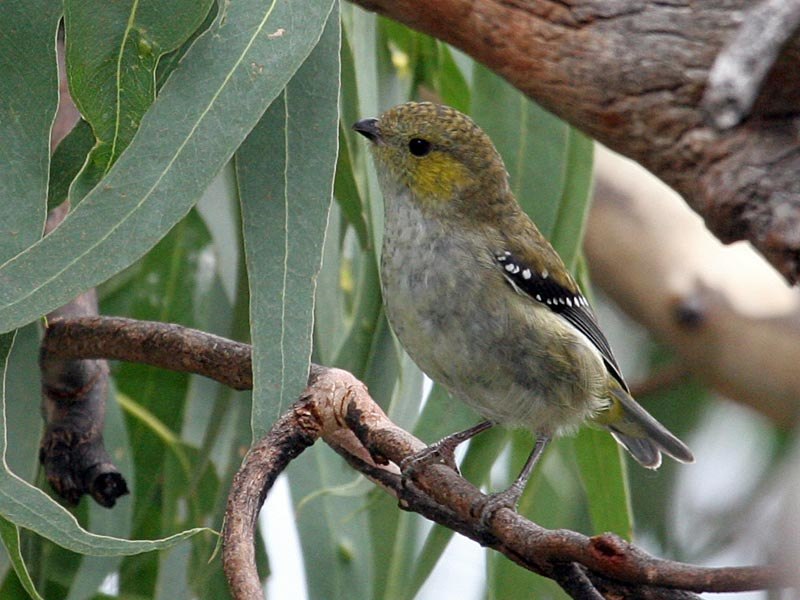
The forty-spotted pardalote is a rare and unique bird found only in a few colonies in Tasmania, Australia. It is the rarest pardalote species and is smaller in size, about 9 to 10 cm long.
This small and energetic passerine has distinctive features including forty distinct spots on its wings. The bird’s habitat is mainly on Maria Island and Bruny Island.
Although it resembles the more common spotted pardalote, the forty-spot pardalote has its unique features that distinguish it from the others.
The bird’s rarity is a result of habitat destruction and disturbance, causing a decline in their population.
Conservation efforts are in place to protect their habitat and aid their recovery to increase their numbers.
The forty-spotted pardalote is a fascinating species and a significant part of Tasmania’s biodiversity, making it a matter of conservation concern.Scientific classification:
| Kingdom | Animalia |
| Phylum | Chordata |
| Class | Aves |
| Order | Passeriformes |
| Family | Pardalotidae |
| Genus | Pardalotus |
| Species | P. quadragintus |
17. Black Currawong
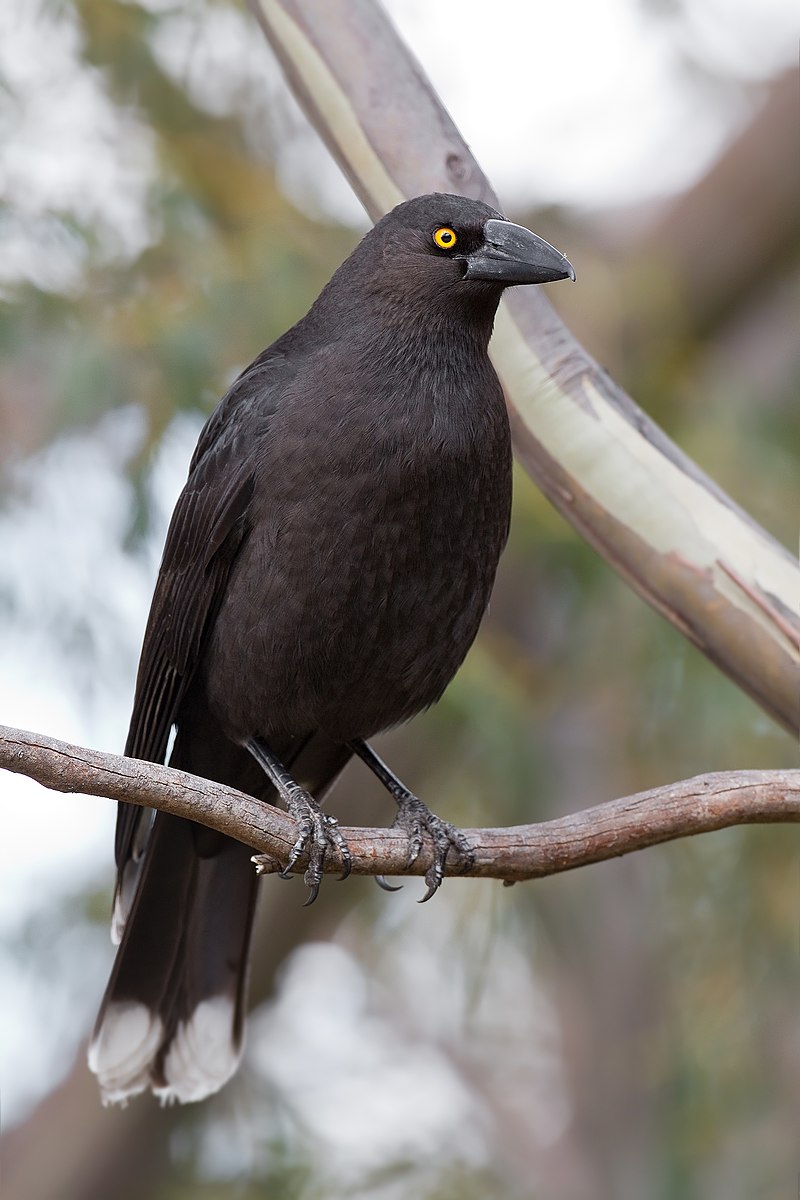
The black currawong, or black jay, is a bird found only in Tasmania and nearby islands. It is part of the Strepera genus, closely related to butcherbirds and magpies.
This large bird is about 50 cm long and has a black feather coat with yellow eyes. Despite its crow-like appearance, the black currawong has a unique and melodious call.
It is often found in forest and woodland areas but also ventures near human habitation for food. The black currawong is an important part of Tasmania’s ecosystem, helping to disperse seeds and control pest populations.
However, habitat destruction and introduced predators have threatened its population in recent years. Conservation efforts are underway to protect this unique and vital species.Scientific classification:
| Kingdom | Animalia |
| Phylum | Chordata |
| Class | Aves |
| Order | Passeriformes |
| Family | Artamidae |
| Genus | Strepera |
| Species | S. fuliginosa |
18. Forest Raven
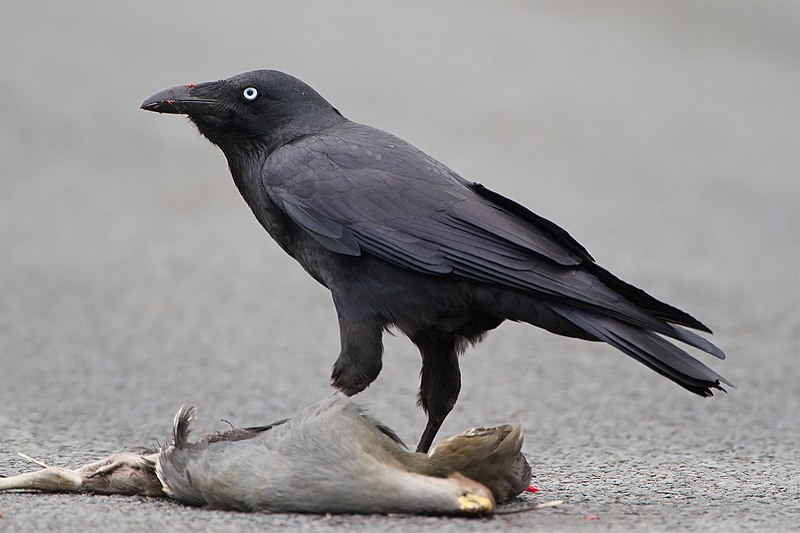
The forest raven, also known as the Tasmanian raven, is a black bird found in Tasmania, southern Victoria, and parts of New South Wales. It is a passerine bird in the Corvidae family with a length of 50-53 cm.
The forest raven has a dark beak and legs to complement its all-black plumage.Scientific classification:
| Kingdom | Animalia |
| Phylum | Chordata |
| Class | Aves |
| Order | Passeriformes |
| Family | Corvidae |
| Genus | Corvus |
| Species | C. tasmanicus |
19. Dusky Robin
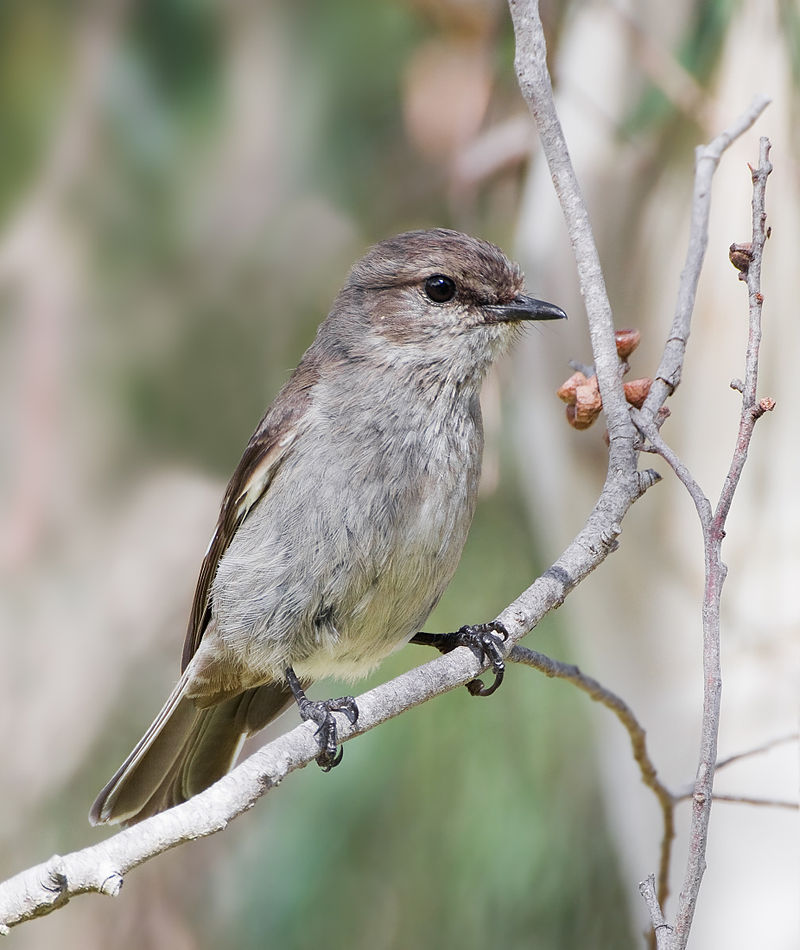
The dusky robin, a member of the Australian robin family Petroicidae, is a small passerine bird endemic to Tasmania. This bird is also known by several other names, including Dozey, Sleepy, and Stump.
It has a sombre dark brown appearance, with a narrow line behind the eye leading to the rear of the ear-coverts. White bars are present on its wings. Although it has a sad and melancholic appearance, it is a joy to hear its chirping melodies.
This native sparrow can often be spotted flitting between trees and shrubs, searching for insects to feed on.
Despite its small size, the dusky robin plays a significant role in the Tasmanian ecosystem, helping to keep insect populations under control.Scientific classification:
| Kingdom | Animalia |
| Phylum | Chordata |
| Class | Aves |
| Order | Passeriformes |
| Family | Petroicidae |
| Genus | Melanodryas |
| Species | M. vittata |
20. Tasmanian Thornbill
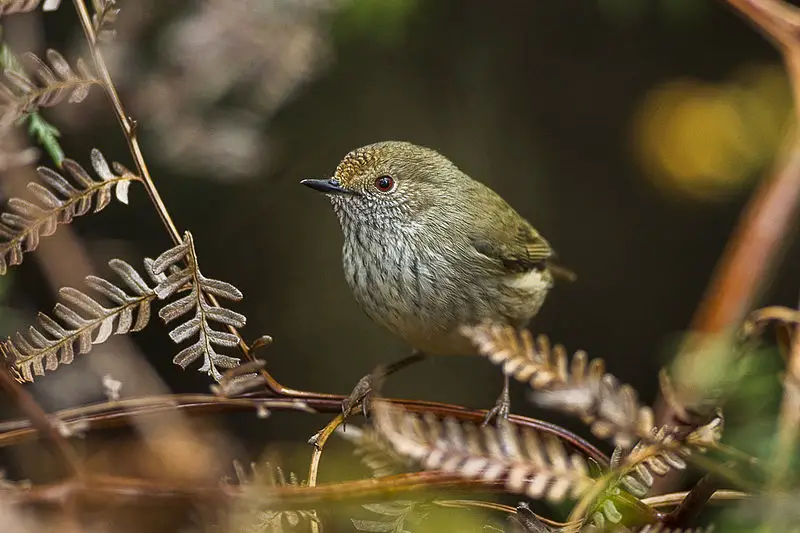
The Tasmanian thornbill is a small bird that belongs to the Acanthizidae family. It is found only in Tasmania and the Bass Strait Islands. This bird prefers cold and wet habitats, and is commonly found in these regions.
Its corresponding dry habitat is generally occupied by the brown thornbill. The Tasmanian thornbill is a frequent sight in its habitat.Scientific classification:
| Kingdom | Animalia |
| Phylum | Chordata |
| Class | Aves |
| Order | Passeriformes |
| Family | Acanthizidae |
| Genus | Acanthiza |
| Species | A. ewingii |
21. Dusky Woodswallow
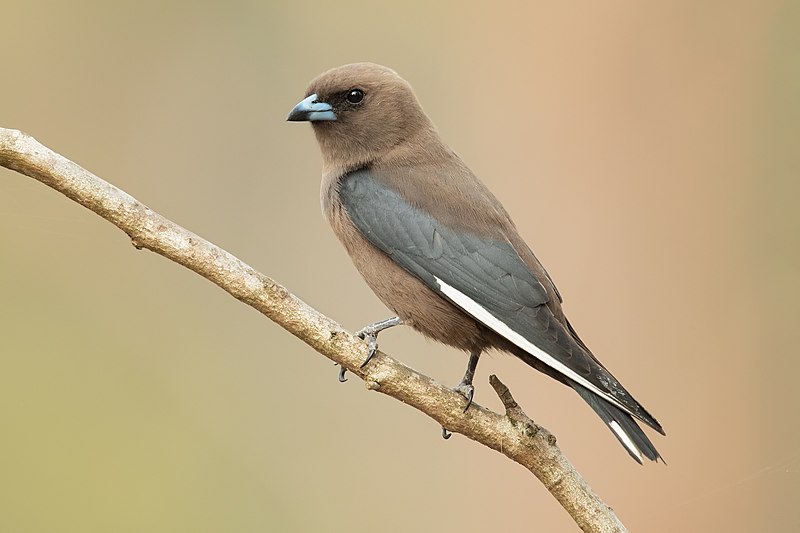
The Dusky woodswallow bird is commonly found in forests and woodlands in temperate and subtropical regions, but it can also be seen in tropical areas around the Atherton Tableland in eastern and southern Australia.
Although the global population of this bird is yet to be officially confirmed, it is ranked as “Least Concern.” The Dusky woodswallow has a unique appearance with its bluish-black head, grayish-brown back, and long, slender wings.
It feeds mainly on insects, and its diet can include ants, beetles, and flies. This bird is quite social and can often be seen perched on branches with other woodswallows in the same tree.
The Dusky woodswallow’s melodious call can also be heard across its natural habitat.Scientific classification:
| Kingdom | Animalia |
| Phylum | Chordata |
| Class | Aves |
| Order | Passeriformes |
| Family | Artamidae |
| Genus | Artamus |
| Species | A. cyanopterus |
22. Red-Necked Stint
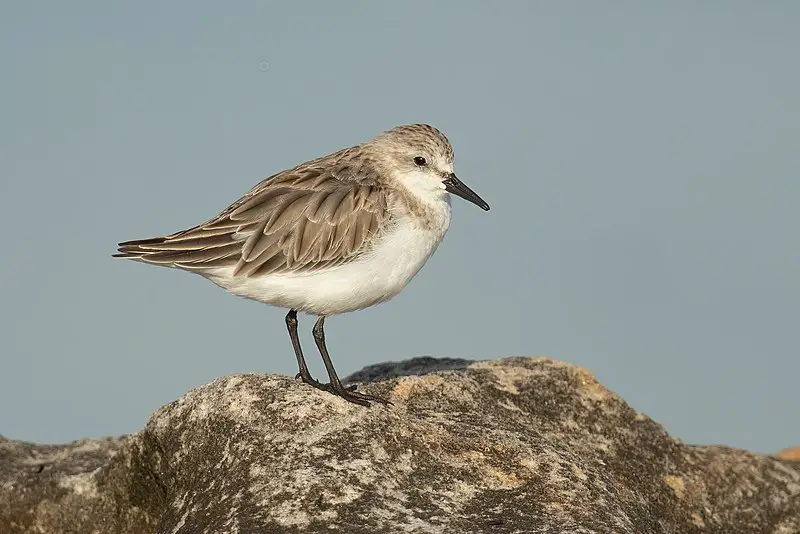
The Red-necked stint is a migratory wader known for its small size. It is often compared to the Little stint due to its similar appearance.
The bird’s genus name, Calidris, refers to grey-coloured waterside birds, according to Aristotle.
The Latin word rufus, meaning “red,” and collum, meaning “neck,” comprise the bird’s specific name ruficollis.
These tiny birds are known for their vibrant colors and are easily recognizable due to their distinct red necks.
They are also known for their remarkable migration patterns, flying long distances during breeding and non-breeding seasons.
Despite their small stature, Red-necked stints are impressive birds with a fascinating history.Scientific classification:
| Kingdom | Animalia |
| Phylum | Chordata |
| Class | Aves |
| Order | Charadriiformes |
| Family | Scolopacidae |
| Genus | Calidris |
| Species | C. ruficollis |
Also Featured In: Most Common Birds Live in Osaka, Birds You’ll Find in Hokkaido
23. Banded Lapwing
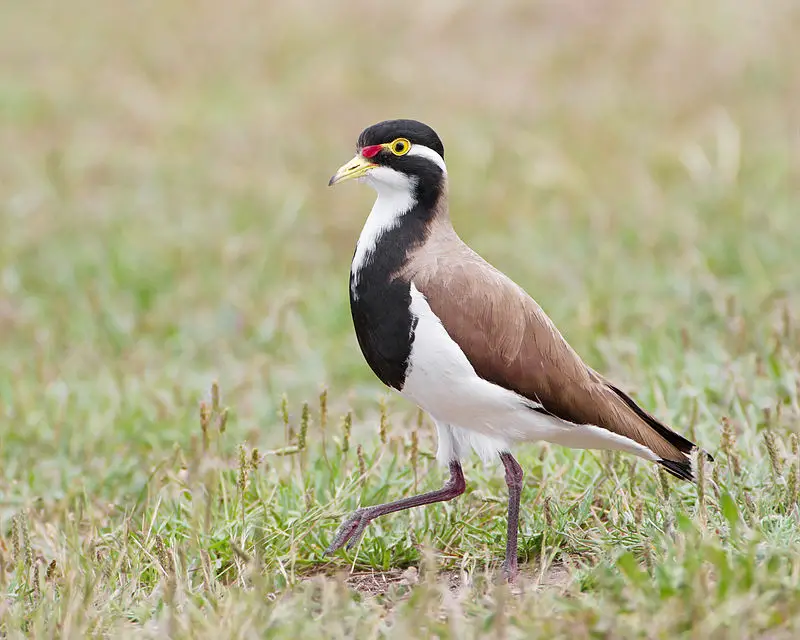
The Banded lapwing, also known as black-breasted or brown flock, is a small to medium-sized shorebird native to Australia. This bird can be found in small groups or large flocks on open grasslands, agricultural land, and open savannah.
It was once considered a game bird for hunting. The estimated population of this species ranges from 25,000 to 1,000,000.
The Banded lapwing is a ground-dwelling bird that feeds on insects and small invertebrates. It is easily recognizable by its distinctive black and white striped chest and striking red eyes.
This bird is an important indicator of the health of grassland ecosystems and plays a vital role in insect control.Scientific classification:
| Kingdom | Animalia |
| Phylum | Chordata |
| Class | Aves |
| Order | Charadriiformes |
| Family | Charadriidae |
| Genus | Vanellus |
| Species | V. tricolor |
24. Grey Shrikethrush
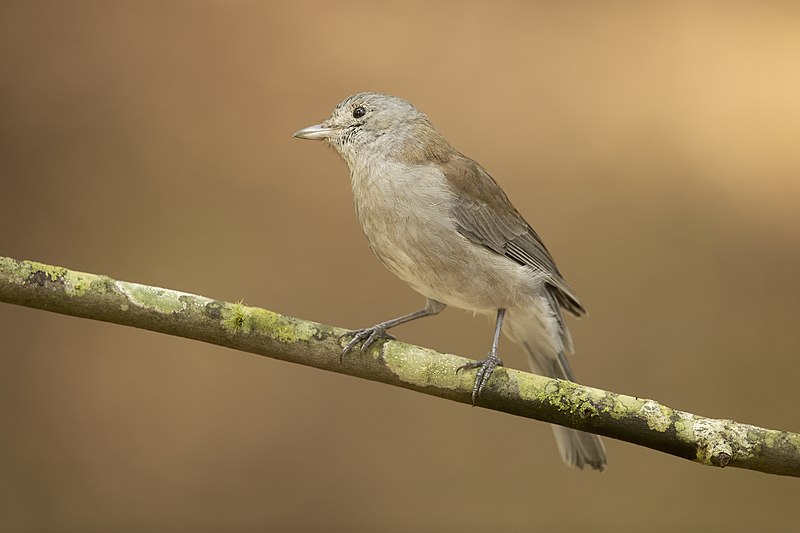
The grey shrikethrush, also known as the grey shrike-thrush or grey thrush, is a songbird native to Australasia. It can be found in most parts of Australia, but is absent from the driest areas of the inland deserts.
The bird is moderately common and is also found in New Guinea. It was originally classified under the genus Turdus.
The grey shrikethrush is often mistaken for the brown shrike-thrush due to similar appearance. They have a unique vocalization that consists of a series of melodious notes.
This bird is territorial and can be heard singing throughout the year, with peak breeding season being in August to December.
Despite being a common bird, certain regional populations have declined due to habitat destruction and fragmentation.Scientific classification:
| Kingdom | Animalia |
| Phylum | Chordata |
| Class | Aves |
| Order | Passeriformes |
| Family | Pachycephalidae |
| Genus | Colluricincla |
| Species | C. harmonica |
Also Featured In: Native Birds Of Mackay,
25. Blue-Billed Duck
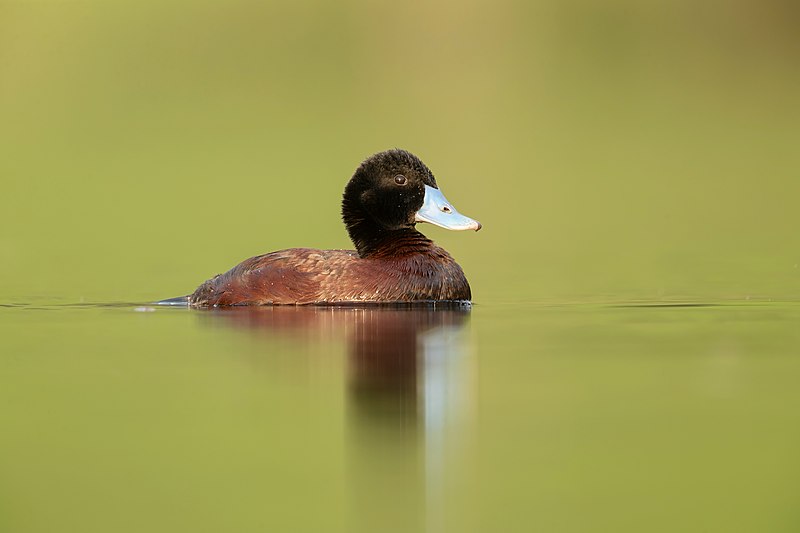
The Blue-billed duck is a small Australian waterbird that grows up to 40 cm long. It has a distinctive blue bill that turns brighter during breeding season, which is the reason behind its name.
Male Blue-billed ducks have chestnut plumage during breeding season which changes back to dark grey afterwards.
Females, on the other hand, retain their black plumage. The Blue-billed duck is a stiff-tailed duck that inhabits wetlands and shallow lakes.
It is commonly found in eastern and southeastern Australia, including Tasmania.
Despite being a relatively common species, it is considered to be vulnerable due to habitat loss, pollution, and hunting. Conservation efforts are underway to protect the Blue-billed duck and its habitat.Scientific classification:
| Kingdom | Animalia |
| Phylum | Chordata |
| Class | Aves |
| Order | Anseriformes |
| Family | Anatidae |
| Genus | Oxyura |
| Species | O. australis |
26. Australian Golden Whistler
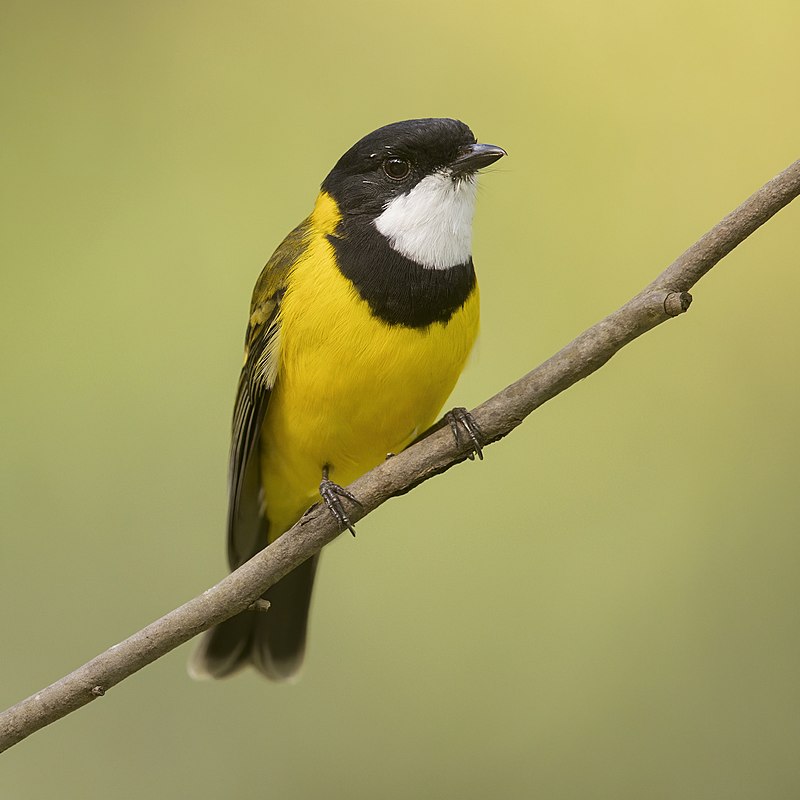
The Australian golden whistler, also known as golden whistler, is a bird species found in various Australian habitats but not in the interior and most part of the north.
They inhabit forest, woodland, mallee, mangrove, and scrub and are mostly residents, but populations in southeastern Australia migrate northwards during winter.
The taxonomy of the Australian golden whistler bird is subject to dispute due to its complex nature.
This beautiful bird has a golden-yellow plumage with a black mask around its eyes, distinctive white eyebrows and throat, and wings and tail with black and white markings.
It is known for its sweet and melodic whistling calls, often heard during breeding season.
Australian golden whistlers mainly feed on insects and fruits, and can be observed foraging in trees and shrubs.
They play an important role in maintaining the ecosystem and are a source of delight for birdwatchers and nature lovers.Scientific classification:
| Kingdom | Animalia |
| Phylum | Chordata |
| Class | Aves |
| Order | Passeriformes |
| Family | Pachycephalidae |
| Genus | Pachycephala |
| Species | P. pectoralis |
27. Black-Headed Honeyeater
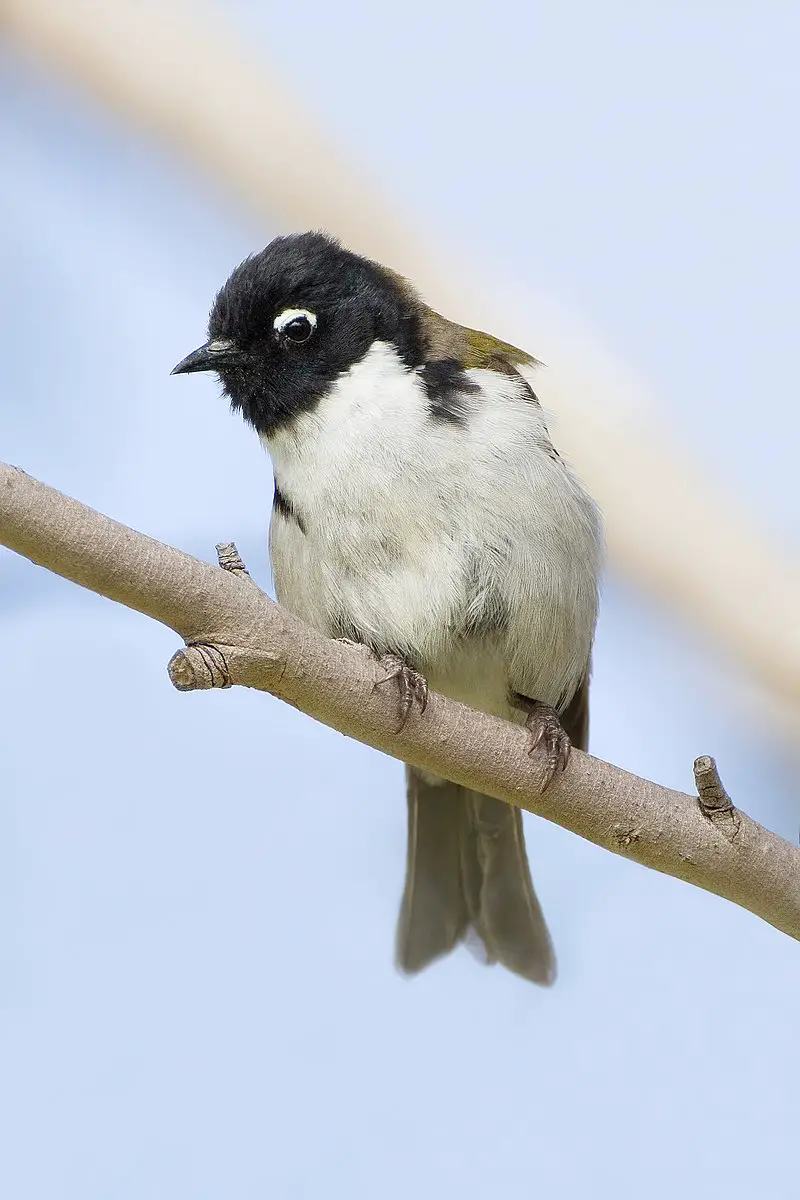
The Black-headed honeyeater bird is a unique species found only in Tasmania. This bird belongs to the family Meliphagidae and feeds mainly on insects, despite its name suggesting otherwise.
Its natural habitats include temperate forests and shrubby vegetation. The Black-headed honeyeater is known for the black feathers on its head, which make it easy to identify. This bird is one of two members of the Melithreptus genus exclusive to Tasmania.
The ecology and behaviour of the Black-headed honeyeater remain relatively understudied, leaving much to learn about this fascinating species.Scientific classification:
| Kingdom | Animalia |
| Phylum | Chordata |
| Class | Aves |
| Order | Passeriformes |
| Family | Meliphagidae |
| Genus | Melithreptus |
| Species | M. affinis |